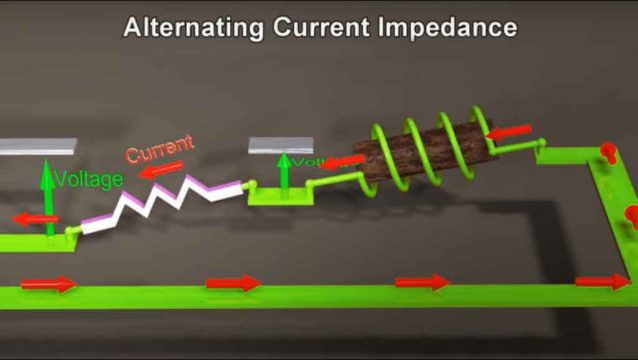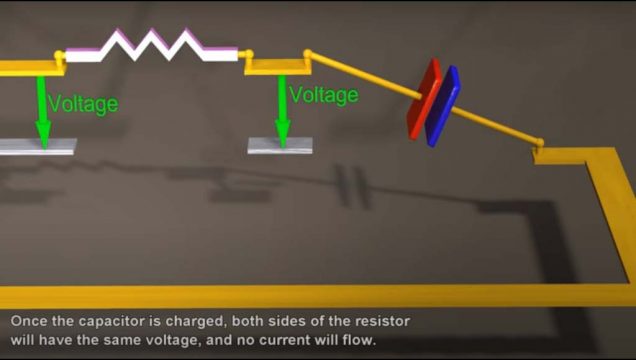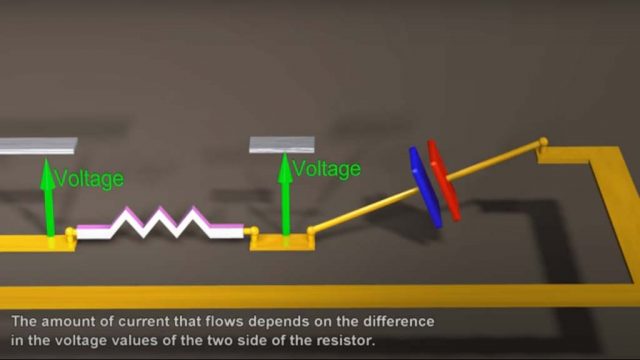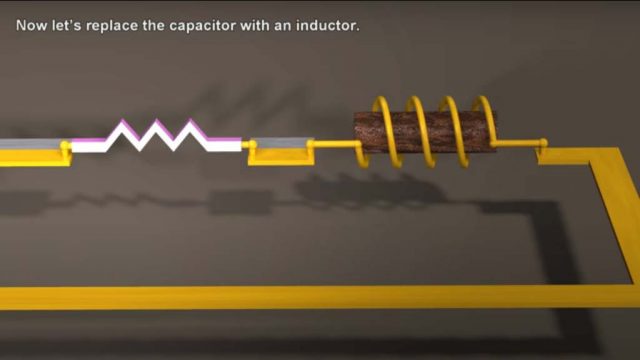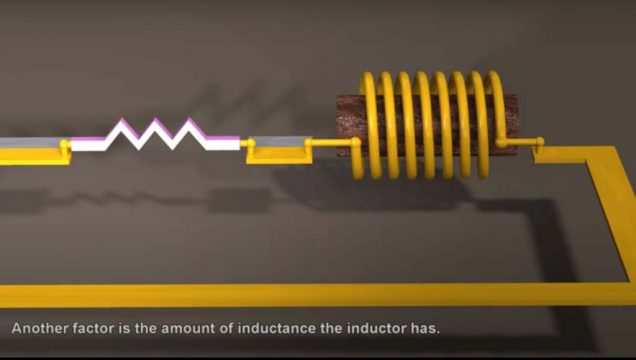AC current impedance – Alternating Voltage for inductor and capacitor
Alternating Current Impedance “Inductor and Capacitor”:
Inductors, Capacitors, and Resistors are the building blocks of an electrical or electronics circuit. If we apply an AC voltage, the frequency of the voltage affects the amount of current that will flow.
Inductors, capacitors, and resistors all react differently to AC voltage. But, in all three cases, the frequency of the AC current will be exactly equal to the frequency of the voltage.
Let us call the voltage at this point the “Input Voltage.” This is the voltage that we control. In the case of an ideal resistor, the current that flows is always proportional to the difference in the voltage values at the two sides of the resistor. This means that if the only components in our circuits are ideal resistors, then the amplitude of the current that flows is independent of the voltage’s frequency.
Now, suppose we replace the resistor on the right with a capacitor.
Once the capacitor is charged, both sides of the resistor will have the same voltage, and no current will flow.
Current flows only if we change the value of the input voltage. The amount of current that flows depends on the difference in the voltage values of the two sides of the resistor.
If we change the value of the input voltage slowly, then the voltage values of the two sides of the resistor will tend to stay at about the same voltage. This means that only a small amount of current will flow through this circuit at low frequency.
At high frequency, a larger amount of current will flow. This is because if we vary the input voltage quickly as shown, the capacitor never has enough time to charge, and the voltage across it always stays close to zero. Having a voltage across the capacitor that is always close to zero allows a larger voltage difference between the two ends of the resistor, allowing more current to flow. Since the voltage across the capacitor does not have the ability to change instantaneously, the voltage across the capacitor changes after the current changes. Let’s turn off the input voltage.
Now let’s replace the capacitor with an inductor.
An inductor exerts a force preventing the current flowing through it from changing instantaneously. If the input voltage is constant, then the inductor will not exert any forces, and it will therefore not impede the flow of current. If the input voltage changes, the inductor will initially try to keep the current through it at the same value as before.
After we change the voltage, we need to wait for the current to change. After the current changes, the inductor then wants to keep the current at this new value. If we change the input voltage very rapidly as shown, the current will not have enough time to change. This means that only a small amount of current will flow through the inductor at high frequency. At low frequency, more current will flow. In this sense, an inductor has the opposite behavior of a capacitor. Also, whereas the voltage across a capacitor can’t change instantaneously, for an inductor it is the current that can’t change instantaneously. This means that for an inductor, the current changes after the voltage changes. The frequency of the input voltage is only one of the factors that determine how much the inductor will impede the flow of current.
Another factor is the amount of inductance the inductor has.
If the inductor has a higher inductance, then a smaller amount of AC current will flow through it. This is because with a higher inductance, the inductor will exert a greater force trying to keep the current flowing through it constant. In this example, even though we have a low frequency, we still have a small amount of AC current flowing due to the fact that the value of the inductance is high.
Increasing the capacitance of a capacitor has the opposite effect of increasing the inductance of an inductor. If a capacitor has a higher capacitance, then a larger amount of AC current will flow through it. This is due to the fact that with a higher capacitance, the capacitor charges and discharges more slowly. Therefore, in this case, the voltage across the capacitor stays close to zero, thereby allowing a larger difference in voltage to develop at the two ends of the resistor, thereby allowing more current to flow.
Watch Video:
